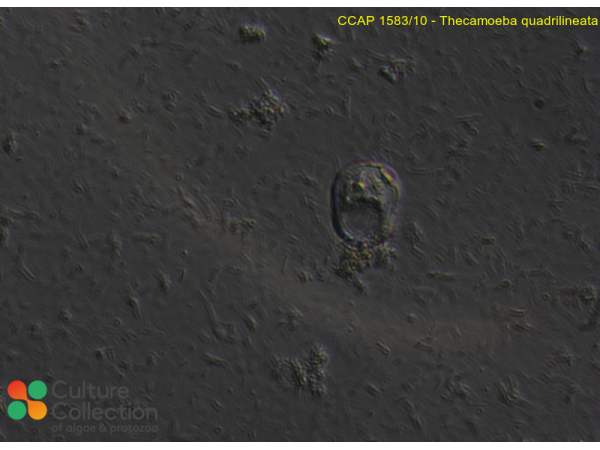Note: for strains where we have DNA barcodes we can be reasonably confident of identity, however for those not yet sequenced we rely on morphology
and the original identification, usually made by the depositor. Although CCAP makes every effort to ensure the correct taxonomic identity of strains, we cannot guarantee
that a strain is correctly identified at the species, genus or class levels. On this basis users are responsible for confirming the identity of the strain(s) they receive
from us on arrival before starting experiments.
For strain taxonomy we generally use AlgaeBase for algae and
Adl et al. (2019) for protists.
| Attributes | |
| Authority | Carter 1856 |
| Isolator | Michel (1998) |
| Collection Site | roof gutter sediment Melsbach, Germany |
| Notes | Isolation: various samples of the sediment were transferred to NN agar plates; Before deposit this Thecamoeba was found to be infected by a large fungus-like parasite, Cochlonema euryblastum (CCAP 3010/1), see Michel & Wylezich 2005; Strain lost in 2006, resupplied by depositor March 07 |
| Axenicity Status | Bacteria present |
| Area | Europe |
| Country | Germany |
| Environment | Freshwater |
| GMO | No |
| Group | Protozoa |
| In Scope of Nagoya Protocol | No |
| ABS Note | Collected pre Nagoya Protocol. No known Nagoya Protocol restrictions for this strain. |
| Collection Date | c 1998 |
| Original Designation | Dch-1 |
| Pathogen | Not pathogenic: Hazard Class 1 |
| Strain Maintenance Sheet | |
| Toxin Producer | Not Toxic / No Data |
| Type Culture | No |
| Taxonomy WoRMS ID | 616591 |
CCAP 1583/10
Thecamoeba quadrilineata
- Product Code: CCAP 1583/10
- Availability: See Availability/Lead Times

